All products featured are independently chosen by us. However, SoundGuys may receive a commission on orders placed through its retail links. See our ethics statement.
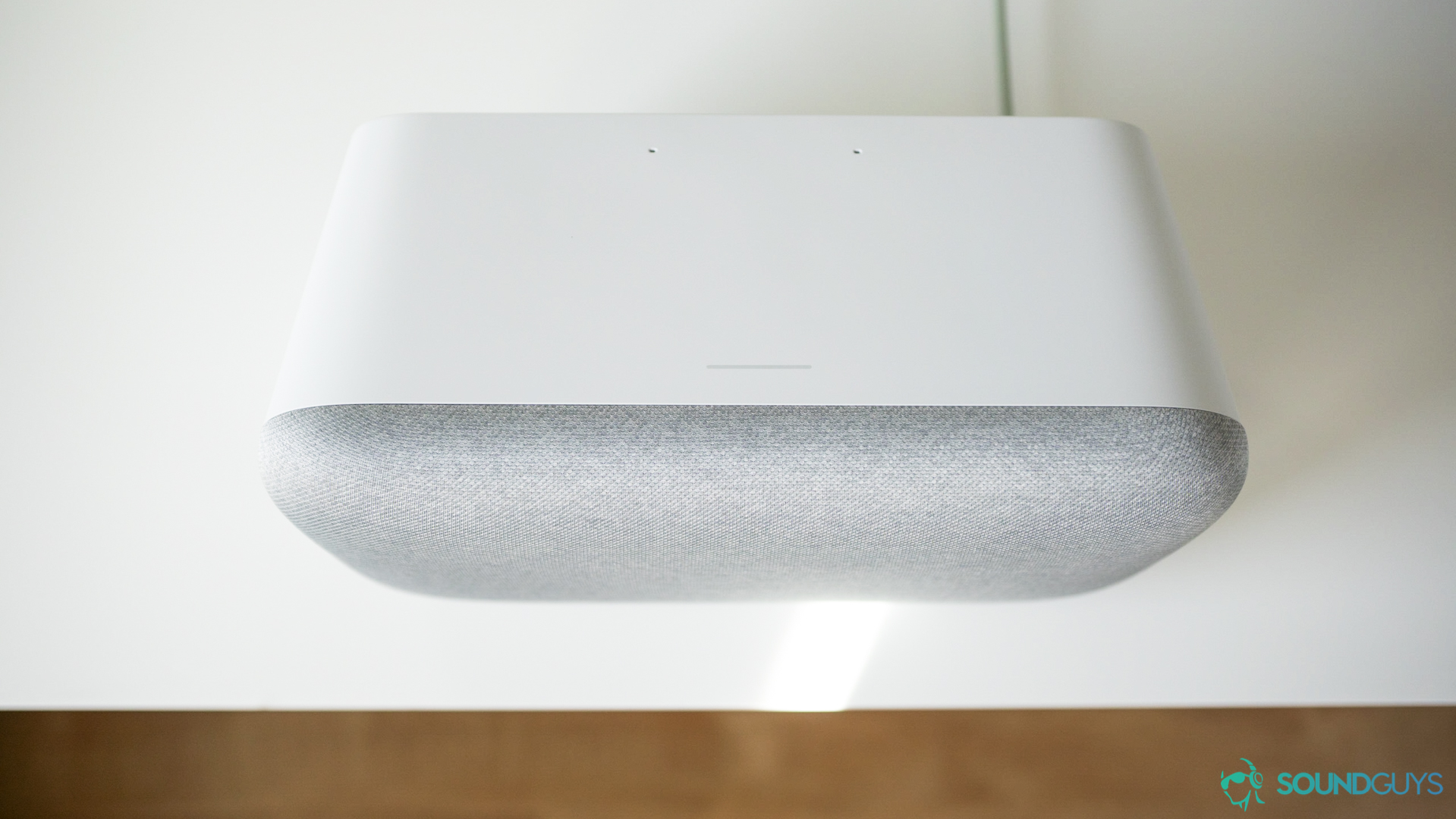
Google Home Max review
April 27, 2021
Google Home Max
Google probably isn’t the first name that comes to mind when you think of home audio but the company changed that with its Google Home lineup (which it has since replaced with the Google Nest line of smart home products). Even though they’re technically speakers, it’s hard to say that the Nest Mini (formerly the Home Mini) was made for listening to music. They’re more for asking questions to the Google Assistant and maybe controlling your smart home appliances every now and then. That isn’t the case with the Google Home Max. This speaker is big, it’s beautifully designed, and what sets it apart from the rest of the line-up is that it was meant for music listening. The Google Home Max is officially discontinued now but if you can get one on sale, is it worth it?
Editor’s note: this Google Home Max review was updated on April 27, 2021, to address its discontinued status, add context to the sound quality section, include a content menu, and add information about the Amazon Echo (4th Gen).
Who should get the Google Home Max?
- People in the Google ecosystem. If you have a Chromecast you can ask your speaker to cast to your TV without ever picking up your remote. The same goes for YouTube and YouTube Music.
- Anyone who actively uses Google voice search. If you’re like me and need to be reminded of basic facts throughout the day, the Google Assistant still gives the best answers out of any personal assistant and it’s only getting better with time.
- Not for Apple Music subscribers. Apple Music doesn’t support the Google Cast protocol like YouTube Music, Spotify, etc. So if you want to stream your Apple Music library you’re going to have to lifehack your way there.
What’s it like to use the Google Home Max?
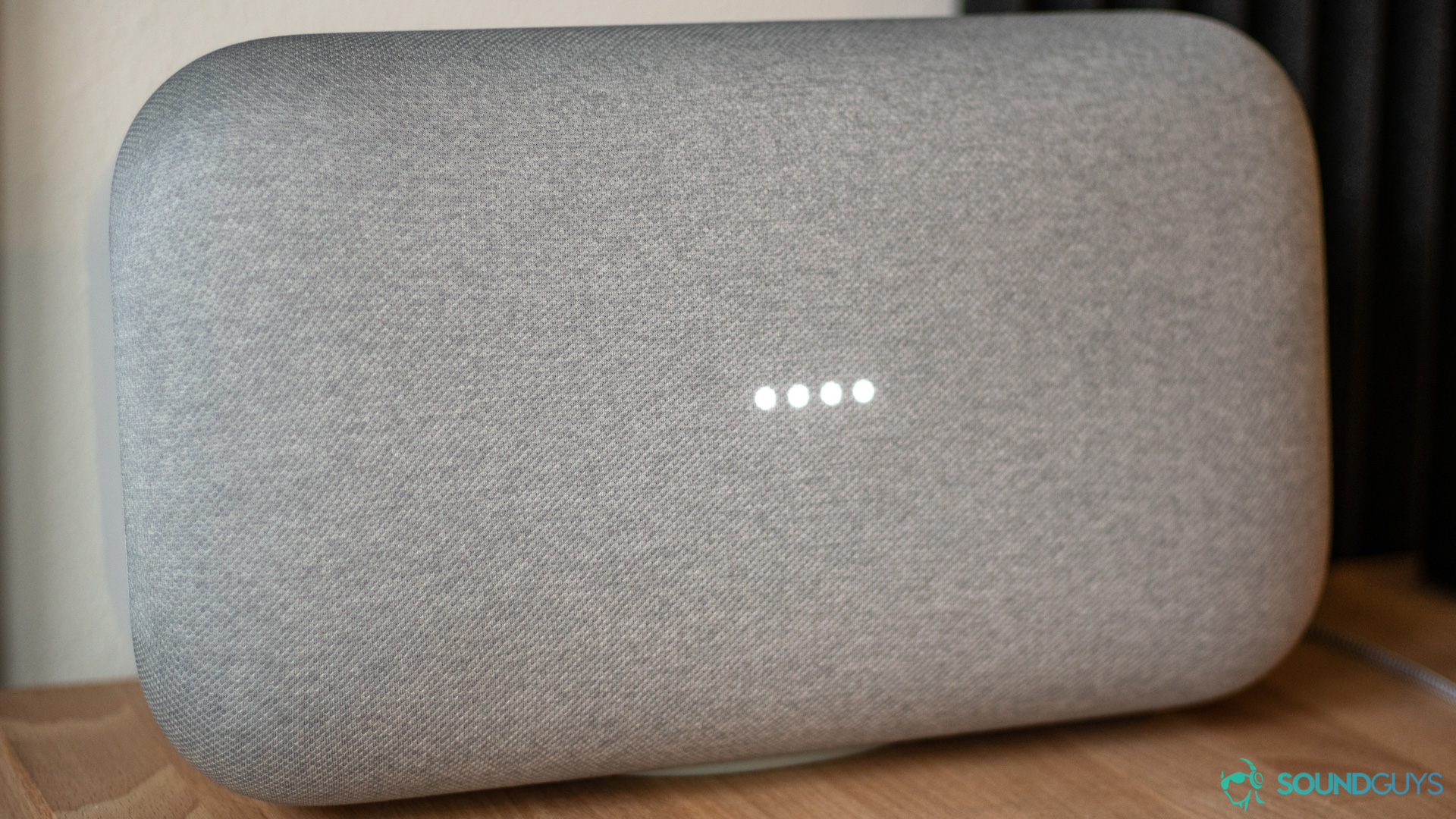
When it comes to setting up a home audio system, it usually requires some confusion and a bunch of cables. That’s been slowly getting better (especially with some of the more expensive options like the LG SK10Y Soundbar), but that’s not an issue at all with the Google Home Max. It only comes with one cable and that’s the power supply. Setting it up is as easy as plugging it in and opening up the Google Home app. It’s very similar to how easy Sonos makes setting up with their app. The Google Home app walks you through step-by-step how to connect the speaker to your wireless router and get it ready for streaming. You should know that WiFi is mandatory as there is no ethernet input if you want to connect it directly to a modem.
Learn more: How do speakers work?
Once you’ve got it connected to your router then all that you need to do to connect to it is press the cast icon that pops up in the app you’re using. Most of the major streaming services, be it YouTube Music, YouTube, Netflix, Spotify, etc., have built-in functionality that will cause the button to pop up automatically in the app. But what makes the Home Max a smart speaker is that you can speak to it. If you don’t feel like browsing through your phone to find that new Childish Gambino song, you can just ask the Home Max to play Feels Like Summer thanks to tiny built-in microphones. Unfortunately, you can’t say “Yo Google” just yet, but “Okay Google” or “Hey Google” work just fine.
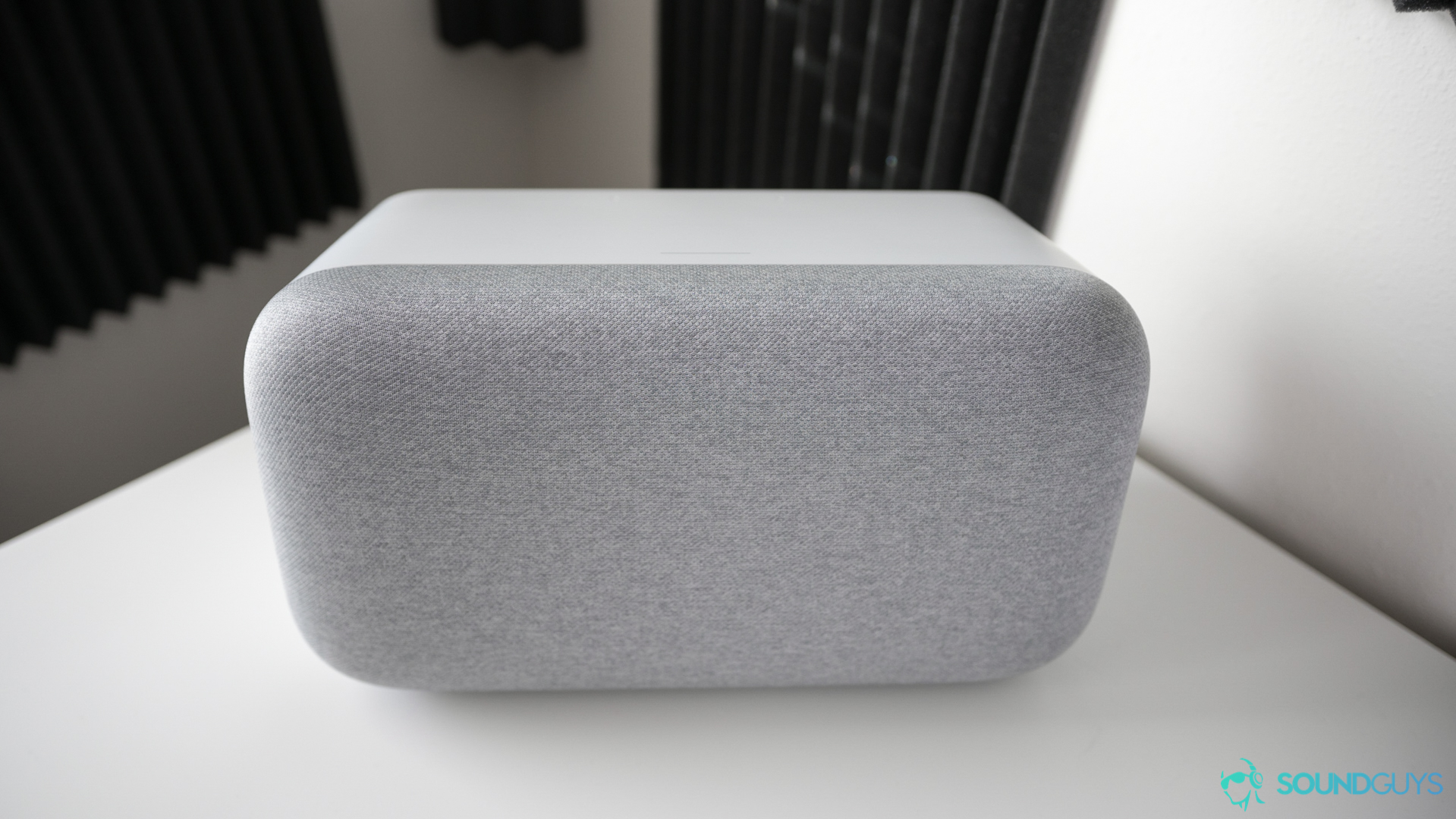
I did have some issues with the speaker hearing me when I spoke to it while music was playing, but I’ll get into that later. If you have a Google Chromecast, getting anything to play on your TV is seamless. Even pausing and playing the content is pretty quick and reliable just by telling the speaker to pause or resume playback. That said, browsing is basically impossible because you’re interfacing with your TV through voice. You have to know what you want to watch, and then tell the Google Home Max to cast it. Otherwise, you’ll have to reach for your phone.
Can the Google Home Max be used as a soundbar?
Technically, yes but we wouldn’t recommend it. The Google Home Max has a 3.5mm input on the back so as long as your TV has a 3.5mm output then it is possible. Connecting your TV this way will definitely make the audio louder but it doesn’t mean it’ll make your viewing experience better. A good soundbar doesn’t just sound good, it also enhances your experience. They do so either by being compatible with codecs like Dolby Atmos or DTS:X or by being part of a larger 5.1 or 7.1 surround sound setup. The Google Home Max is a great speaker but it was designed to make your music sound good not your movies.
Is the Google Home Max well-built?
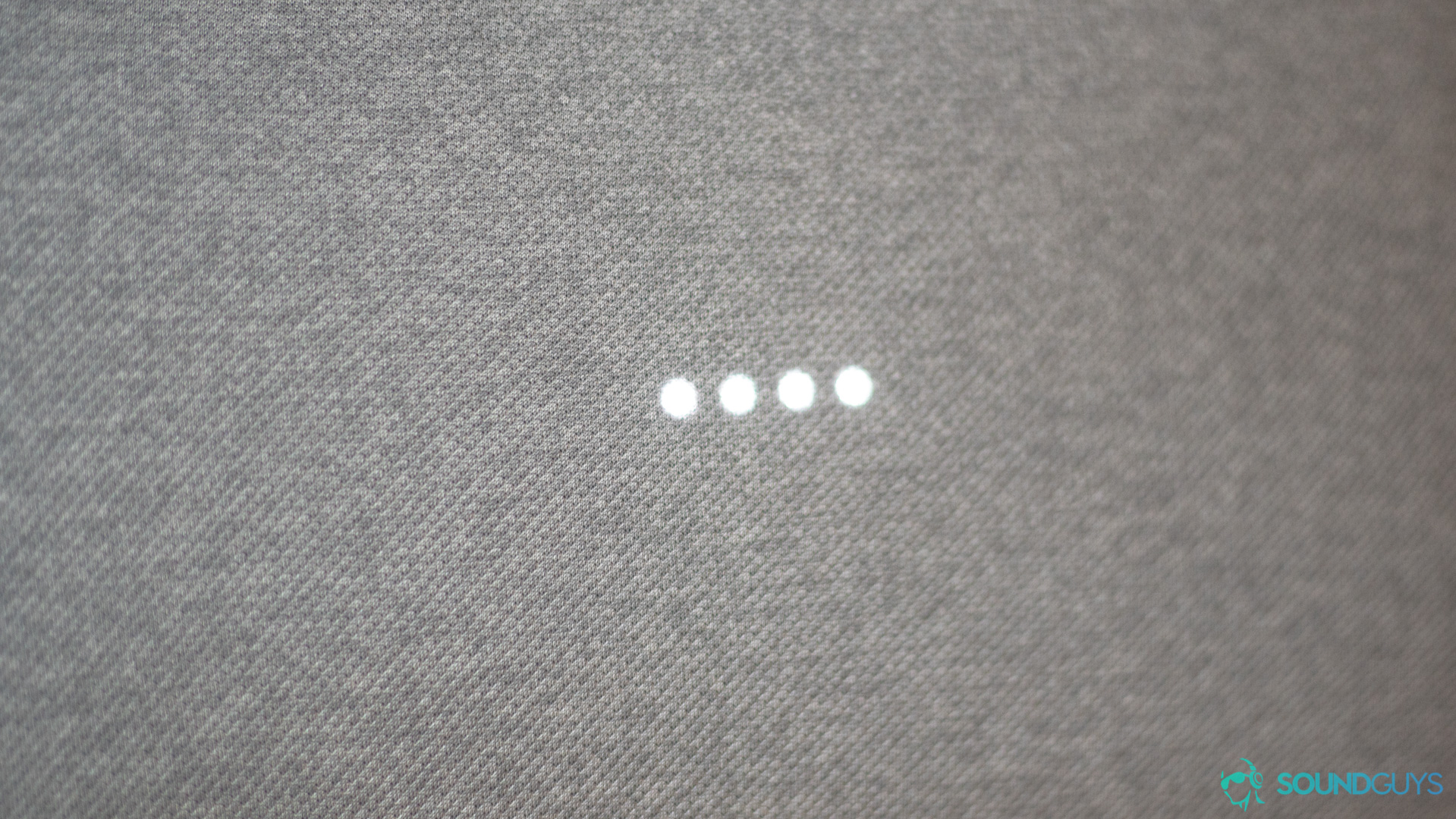
At first glance, you’ll notice one thing about the Google Home Max: it’s big. Even if you compare it to other smart speakers like the Amazon Echo (4th Gen) or Apple HomePod, the Home Max easily overtakes them in size. It measures 33.5 x 18.7 x 15 cm and weighs 5.3 kg, so no, it isn’t portable. This was made to be plugged into a wall and left there. As far as build materials go the housing of the speaker is just a smooth plastic that, surprisingly, doesn’t have any stains or marks on the white version we’ve been testing (it also comes in black). But the impressive part is the fabric used on the front. Google claims it’s “acoustically transparent” and while I’m sure that’s just a fancy way to say it doesn’t mess with the sound, it still at least feels nice to the touch.
Behind the fabric are four lights that only show up when you’re adjusting something on the speaker. They’ll turn off a second after you change the volume or after it’s done listening to what you said. Around back you’ll get the power supply input, a 3.5mm input, and a physical mute switch. The mute switch doesn’t stop music playback, it just turns off the microphone so it isn’t always listening for the hotword. Speaking of which, I found that the microphones on the Google Home Max aren’t too good at picking up my voice when music was playing around 75% or above. I found myself borderline yelling “Okay Google” and sometimes, even then I would just have to walk over to it and physically lower the volume.
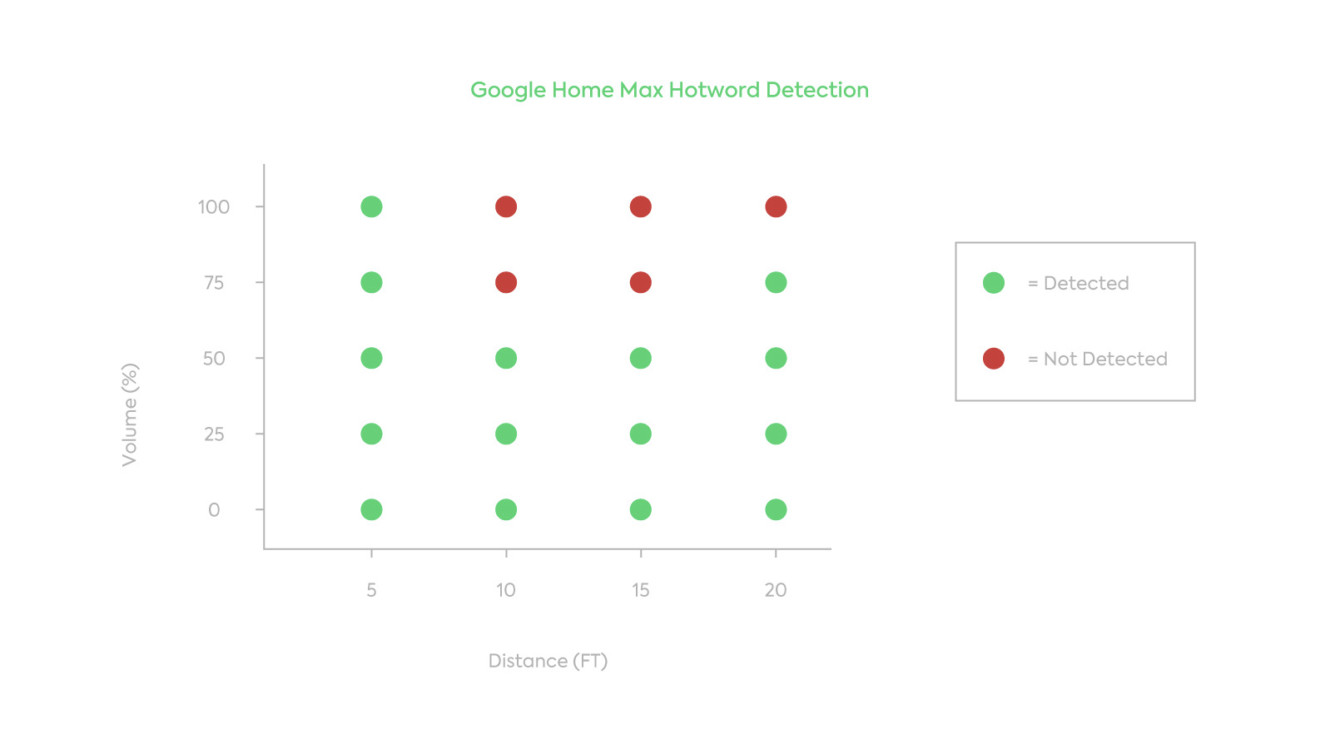
I tested this by playing the song Havana by Camilla Cabelo at four different volumes (25, 50, 75, and 100 percent). Then I played back a recording of myself saying “Hey Google” and played it from a separate speaker at distance of 5, 10, 15, and 20 feet. Sure, this isn’t the most scientific test ever devised but it does highlight how at higher volumes the microphones on the speaker have a hard time picking up voices.
As far as design is concerned, the Google Home Max looks great wherever you decide to put it. Taking a step back from the details in build materials, one of my favorite things about the speaker is its simple and minimal design. Besides the switch on the back (which will probably be facing the wall anyway), the Google Home Max is just one block of plastic. There aren’t any knobs or buttons to take away from the smooth design which makes sense since most of the functionality can be controlled with your voice. There is just one touch sensitive area on the side of the speaker that’s responsible for volume control or pausing/playing music, but that’s it. And because you can orient the speaker vertically or horizontally that touch-sensitive bit can either be on top or on the right side. One helpful feature is that a voice will tell you when you’ve accidentally turned the speaker turned upside-down if you’re moving it.
How does the Google Home Max sound?

Sound quality is where the Google Home Max sets itself apart. Google knew that if it was going to make a speaker of this size meant for listening to music, then it had to sound good. One way it decided to make that happen was by adding their own algorithms that allow the speaker to self-adjust its EQ depending on where you place it using six internal microphones. The team at Google calls this feature Smart Sound and though I can’t prove it, I can say that whether I put the speaker on top of a marble countertop or on a table in the corner of the room the sound remained consistent enough that I couldn’t tell there was a difference.
Normally, if you place a speaker in the corner the low end sounds amplified, almost like putting your smartphone in a cup. But the Google Home Max self-adjusts in order to make sure the sound stays consistent. This is good if you don’t feel like going through the trouble of EQing your music yourself, but not so good if you do because you won’t have that level of control. All you get is the basic bass and treble sliders in the Google home app.
Lows, mids, and highs
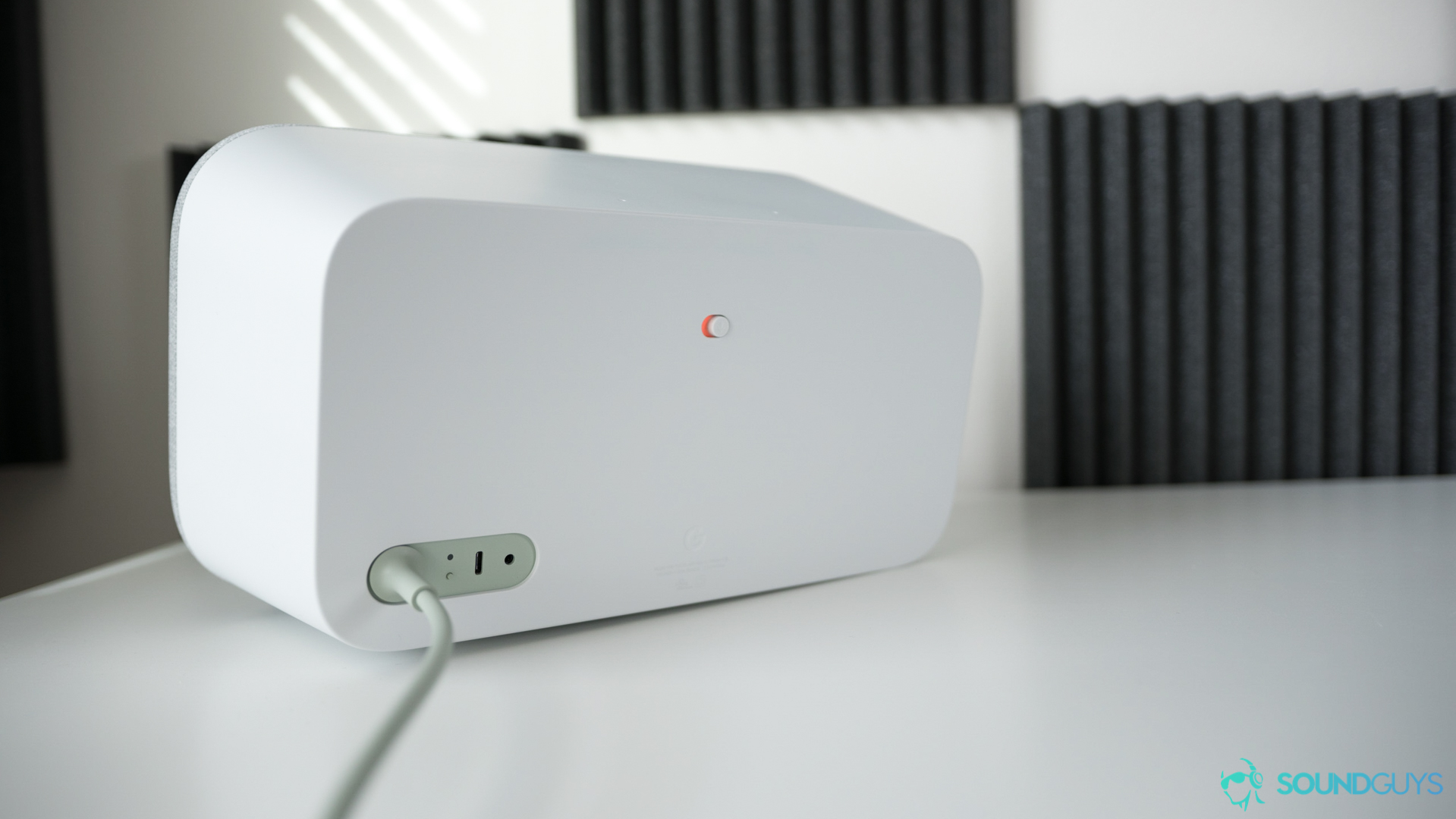
Because of the large size, the Google Home Max can really push some air so the low end is fairly strong just because of physics. In the song Moon River by Frank Ocean, the low E string is a little too strong for my taste, but it gives the song some grittiness and never gets in the way of his vocals in the midrange, which is what counts. The rubber bass pad also keeps the rumbling of the speaker from disturbing anything around it.
The slight emphasis in the lower frequencies will probably be a positive for most people because of its subtlety. It doesn’t overpower the mids at all and when paired with how loud this thing can get, so it’s perfect for powering your parties. That said, it sounded good even at low volumes and I ended up using it to play music in the background throughout the day as well.
Vocals in the song Generator ^ Second Floor by Freelance whales were still plainly audible even with all of the other instruments joining in during the chorus at around the 2:17 mark which includes plenty of thumping drums and bells ringing throughout. Speaking of the bells, one of my only issues regarding sound quality has to do with the high frequencies. It sounds like Google played it safe here and didn’t give them the same kind of emphasis as it did with the lows, which is understandable. When was the last time you heard someone say “Drop the bells”? There isn’t much noticeable distortion at max volume, but there isn’t a ton of reverb to hi-hats and cymbals which can really help with the soundstage of your music.
Does the Google Home Max spy on you?
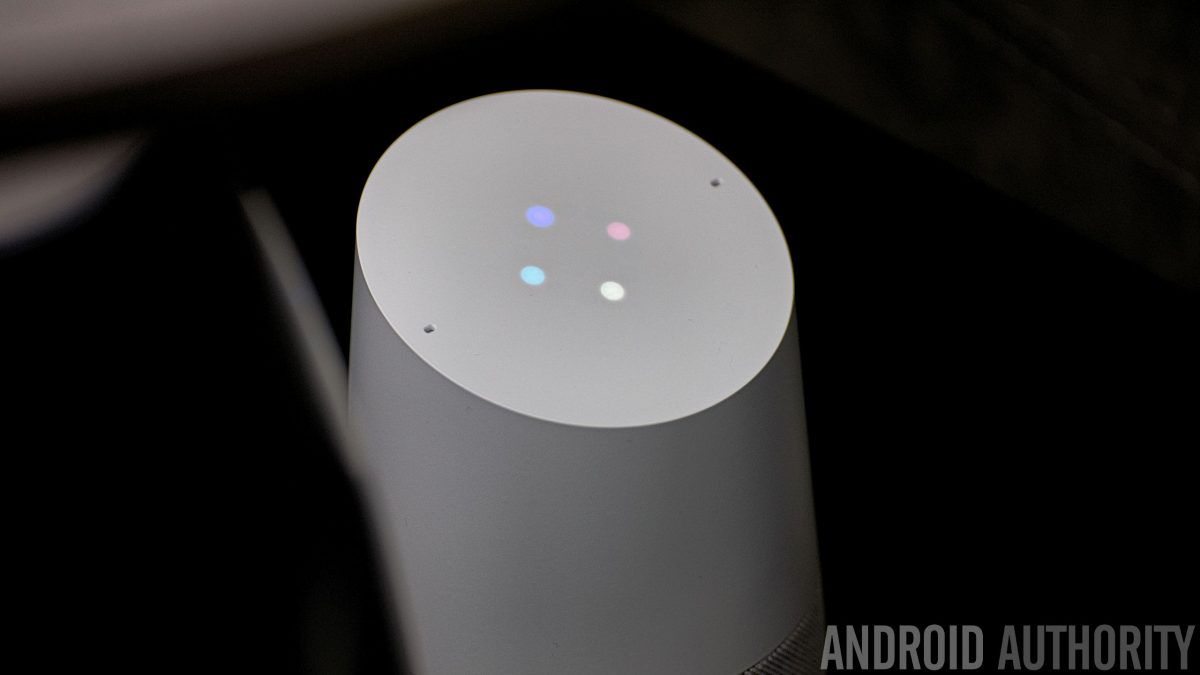
“Spying” is such a strong word. No the Google Home Max isn’t spying on you, as in, it isn’t recording your conversations and delivering them to some foreign government. That said, it is always listening. There are some privacy issues that you should be aware of before you put this thing in your bedroom. For one, some Google Home recordings in the past were leaked thanks to contractors that had access to the recordings. Basically, when the Google Home can’t understand a certain command, Google keeps the audio clip to analyze it to try and fine tune how the speaker understands regular speech.
In order to try and help the Google Assistant better understand what was said (for things like accents and different speech patterns) contractors would then listen to clips. It makes sense since anyone using a virtual assistant has at some point been misunderstood, but in practice, it means that there were actual people listening to recordings and not just algorithms. Of course, the clips are randomized and anonymous, but it’s still more than a little concerning. If you’d rather not take the chance you can always just mute the microphone thanks to the mic switch on the back. You can also turn off the sharing in the Google Assistant settings. It’s worth noting that this has happened with basically all of the major smart speakers including Apple and Amazon speakers, but that still doesn’t make it okay.
Should you buy the Google Home Max?
It’s hard to recommend a smart speaker over a dedicated home audio setup or any other Bluetooth speakers, but the Google Home Max has weaved its way into my life in a way other products haven’t. I admit, I’m already in the group of people that use a Google Home, but that’s mainly for setting alarms, timers, and asking it questions while I cook. With the Google Home Max I still do all of those things, but all while listening to music or podcasts. I think the Google Home Max is the best option for most people who wanted a loud smart speaker that sounds good but unfortunately, the Google Home Max was recently discontinued so you can’t officially buy it from Google anymore. That said, if you can get one for cheap somewhere it’s worth considering.
So what other options are there?
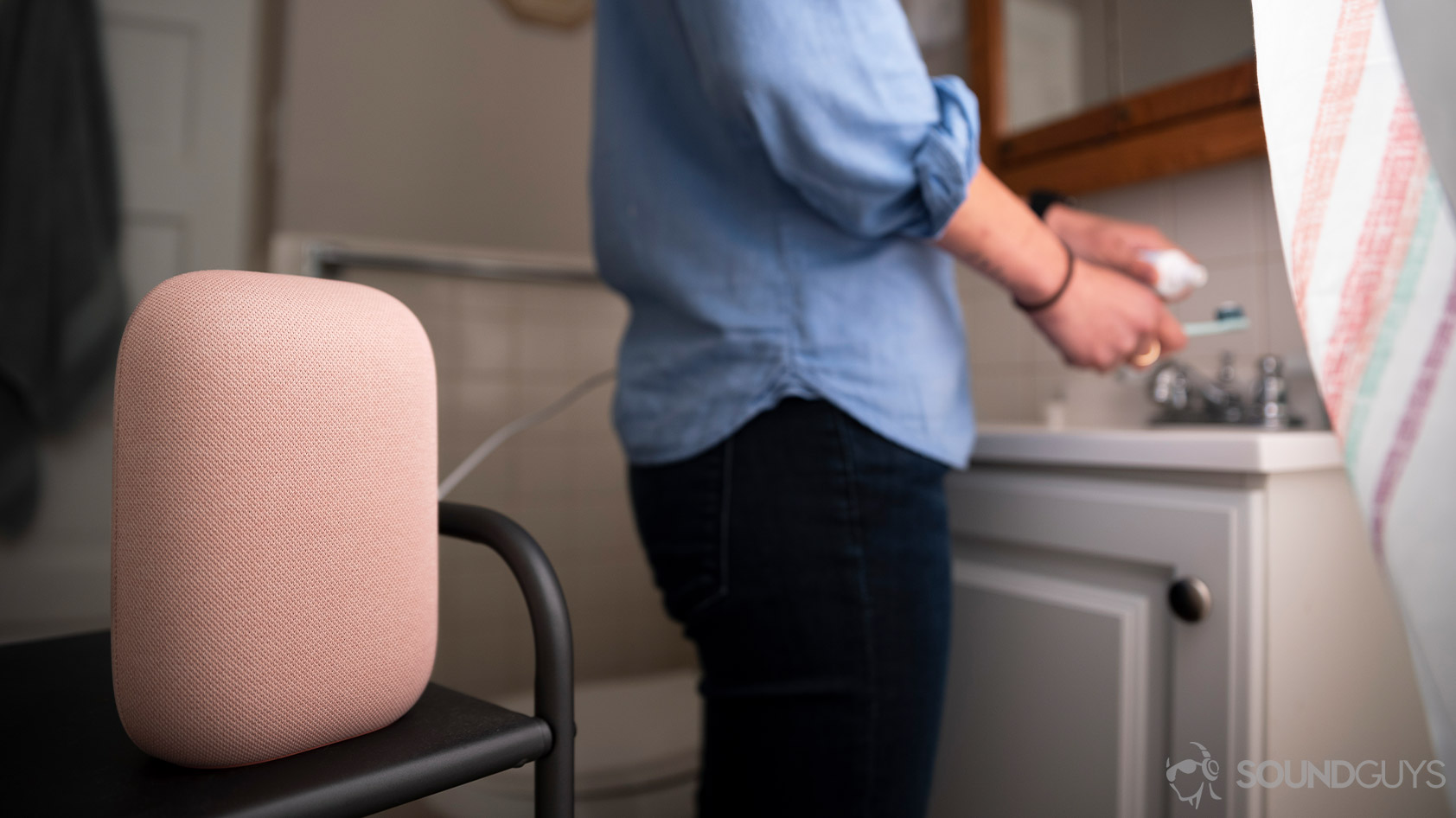
With the Google Home Max being discontinued then your next best bet if you want to stay with Google is the Nest Audio speaker. It has a nice minimal design, good sound, and best of all only costs $99 USD. You can pick up two of these and pair them for stereo sound too which is nice. If you’re more invested in Amazon hardware, you should check out the Amazon Echo (4th Gen): it compares quite well to Google’s speaker.
If you like the idea of a smart speaker but also want Bluetooth so that you can bring the speaker with you when you go outside then you should check out the Sonos Move. While it’s still on the pricey side you get Bluetooth functionality as well as the entire Sonos ecosystem behind to build upon.